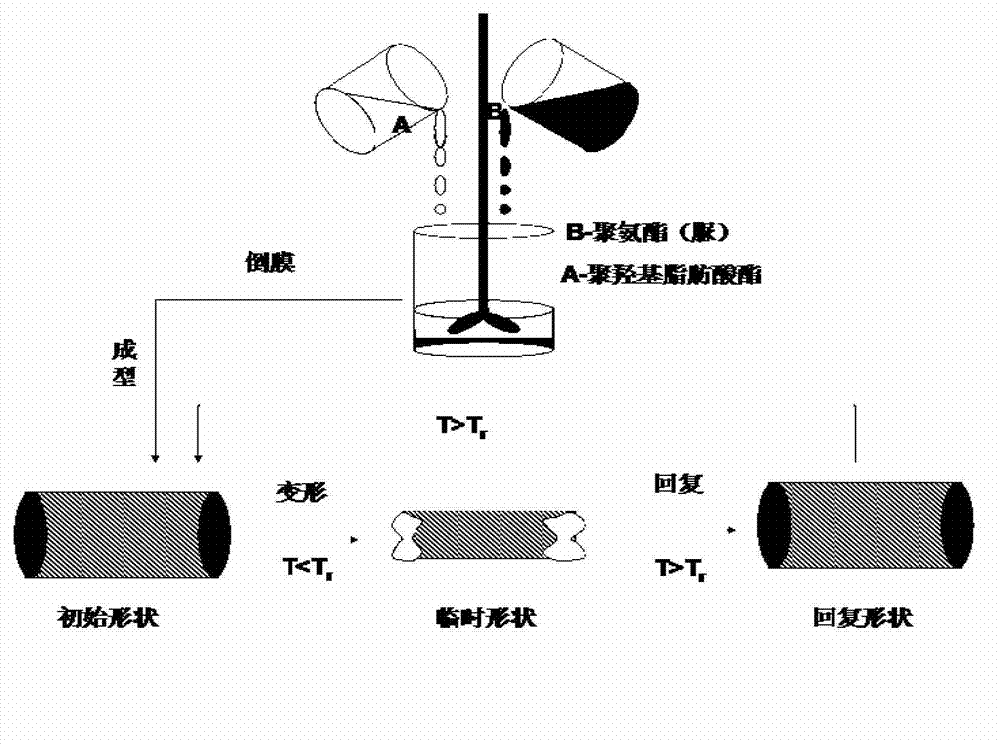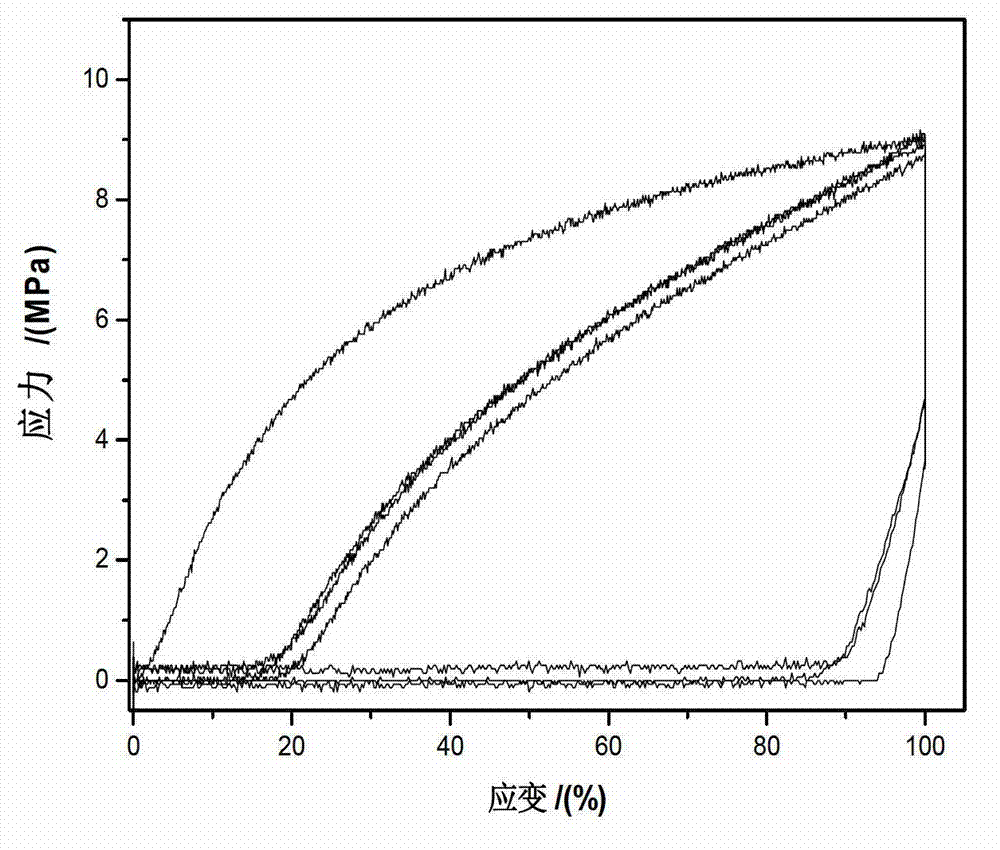Material based on polyhydroxyalkanoate and preparation method and application of material
A technology of polyhydroxyalkanoate and polyhydroxyalkanoate, which is applied in the field of polyhydroxyalkanoate-based materials and its preparation, can solve the problems of lack of composition adjustment and shape memory function, and achieve good integration and good biocompatibility , the effect of extensive application value
- Summary
- Abstract
- Description
- Claims
- Application Information
AI Technical Summary
Problems solved by technology
Method used
Image
Examples
Embodiment 1
[0038] In a three-necked flask, add dimethyl sulfoxide as a solvent, then add liquefied MDI, raise the temperature by 60°C, then slowly add 1,4-dihydroxybutane (BDO) into the solution, keep the temperature for 2 hours, A polyurethane hard segment solution with a mass fraction of 10wt% was prepared.
[0039] At the same time, the commercial resin poly(3-hydroxybutyrate-4-hydroxybutyrate) solution dimethyl sulfoxide was used as a solvent, and mechanically stirred and dissolved in a water bath at 50°C for 24 hours to obtain a uniform 10wt% poly(3 -Hydroxybutyrate-4-hydroxybutyrate) solution.
[0040] Subsequently, 50 parts of polyurethane and 50 parts of poly(3-hydroxybutyrate-4-hydroxybutyrate) solution were uniformly mixed mechanically to obtain a uniform composite solution, and a solution of the polyhydroxy fatty acid-based material was obtained.
[0041] Further, the solution of the polyhydroxy fatty acid-based material was poured into a film, oven-dried at 100° C. for 48 ho...
Embodiment 2
[0044] In a three-necked flask, add N,N-dimethylformamide as a solvent, then add liquefied MDI, raise the temperature to 60°C, then slowly add N,N-bis(2-hydroxyethyl)isonicotinamide to the solution , keeping the temperature for 2 hours to prepare a 10wt% pyridine polyurethane solution.
[0045] At the same time, the commercial resin poly(3-hydroxybutyrate) solution N,N-dimethylformamide was used as a solvent, and mechanically stirred and dissolved in a water bath at 50°C for 24 hours to obtain a uniform 10wt% poly(3-hydroxybutyrate) butyrate) solution.
[0046] Subsequently, 55 parts of pyridine polyurethane, 40 parts of poly(3-hydroxybutyrate) solution, and 5 parts of terephthalic acid were uniformly mixed mechanically to obtain a uniform composite solution, and the solution of the polyhydroxy fatty acid-based material was obtained.
Embodiment 3
[0048] The commercial resin poly(3-hydroxybutyrate) was dissolved in chloroform as a solvent, refluxed in a water bath at 50°C, and mechanically stirred for 24 hours to obtain a uniform 10wt% polyβ-hydroxybutyrate-β- Hydroxyvalerate solution.
[0049] Subsequently, take 40 parts of poly-β-hydroxybutyrate-β-hydroxyvalerate / chloroform solution into a 500mL burner, add 20 parts of TDI, 39 parts of hydroquinone glycol polycondensate (BA1EO) , 1 part of water and 1 mL of polyurethane tin catalyst, mechanically vigorously stirred for about 30 minutes, the mixture was mixed evenly, and the reaction began to expand, and then placed in an oven at 120° C. to continue the reaction for 5 to 8 hours to obtain the polyhydroxy fatty acid-based material.
PUM
| Property | Measurement | Unit |
|---|---|---|
| glass transition temperature | aaaaa | aaaaa |
| crystallinity | aaaaa | aaaaa |
| elongation at break | aaaaa | aaaaa |
Abstract
Description
Claims
Application Information
 Login to View More
Login to View More - R&D
- Intellectual Property
- Life Sciences
- Materials
- Tech Scout
- Unparalleled Data Quality
- Higher Quality Content
- 60% Fewer Hallucinations
Browse by: Latest US Patents, China's latest patents, Technical Efficacy Thesaurus, Application Domain, Technology Topic, Popular Technical Reports.
© 2025 PatSnap. All rights reserved.Legal|Privacy policy|Modern Slavery Act Transparency Statement|Sitemap|About US| Contact US: help@patsnap.com


